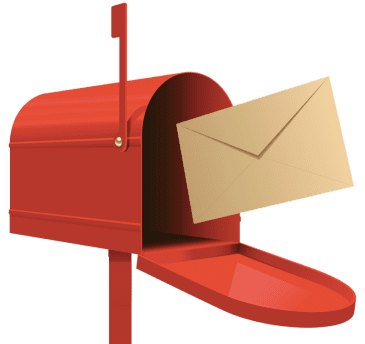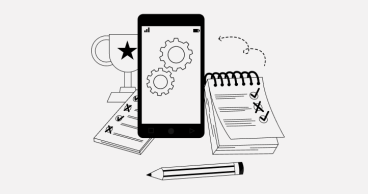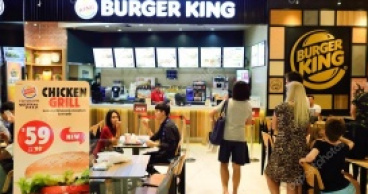Qvalon Blog article content
According to Forbes Business, SaaS will generate $233 billion in revenue by 2022. This only shows that more companies will choose to move their business processes on the cloud in the years to come.
How will this impact fashion brands?
Well, using the right retail management software can help fashion retailers run their operations more efficiently It's essential to choose a versatile, affordable, and multi-platform app that can cater to both luxury brands and SMEs.
Here, we'll discuss the two crucial areas of a fashion retail business — warehouse operation and retail store operation — and why having cloud-based retail management software can simplify your business processes while giving you a competitive edge.
Let's look at it in more detail.

Warehouse Operation
The warehouse process flow covers specific steps from receiving items, organizing and storing inventory, to distributing goods. Hence, it's vital to invest in reliable software as part of your warehouse management process steps.
So, how can we maximize your warehousing operations in supply chain management?
Here's how the right technology can make warehouse operations easier.
Organizing the warehouse layout (Planogram)
What's the point of arranging the warehouse layout? Many people wonder why this is necessary. Well, it's all about having enough storage space.
The planogram gives you a clear view when receiving goods in the warehouse. It also lets you monitor the storing and packing for shipment, including proper shelving to maximize the space.
Another factor that can contribute to an organized warehouse management process is communication. For example, the planogram helps your team locate the product and avoid misplacement of goods. Therefore, it supports effective communication flows within your warehouse team, as well.
Receiving goods and inventory
When it comes to receiving goods and inventory, timing is everything. Having a digitized solution takes off the pressure from your warehouse staff while ensuring the orders received are the right product, quantity, and condition.
Using operation management software can help you optimize this step and reduce the possibility of errors.
For instance, you can use a single application for multiple tasks like requesting and sending inspection reports, auditing, and communicating between departments. You also have an automatic task execution control at your disposal. All of these make it easier to get information from the warehouse quickly.
What's more, is that it can help cut down warehouse operating costs. Since labor costs are the highest operating cost in a typical warehouse, accounting for 50 to 70 percent of the average company's warehouse budget—you can reduce your expenses by eliminating over-allocation of resources (labor or equipment) without compromising the receiving process.
Detecting product flaws
The last thing you want is to put damaged products in your retail stores. You want to nip this in the bud by sorting through your products at the warehouse and save your customer from disappointment and eliminate the cost of product returns.
After all, manufacturers and retailers suffer losses of more than $100 billion per year from product returns or a 3.8% loss on average.
The right tool helps you document your findings and discover ways to reduce the occurrence of damaged goods, which hurts your company's income. If not, it might happen again and again.
Finding items to sell at a discount
Many fashion retailers struggle with seasonal inventory since their trend-driven merchandise can quickly go out of style. However, keeping tabs on stock investment every season can ensure you don't suffer profit loss.
You can minimize errors when accounting for goods by following the formula generated by your warehouse operation management software. Having a structured approach has plenty of benefits, including determining which apparel items to put on sale so you still make profits from them.
Retail Stores Operation
Another important sector in retail workflow operation processes is store operations. This involves all the activities required to keep the store running successfully.
Warehouse operations are inextricably linked to store operations. In other words, poor warehouse operations can adversely affect sales operations. With the the right management software, you can also manage your store operations more efficiently.
Managing retail display
Customers buy with their eyes. This is why it's very crucial to know what the customers want. Knowing when people usually want something will help with your sales as well. Having this information gives you a slight advantage in planning what to display and when.
Imagine putting out flower patterns and bright-colored clothes in fall—that's sure to raise a few eyebrows, right? After all, the season calls for a solid and warm color palette. Such patterns belong to spring and summer fashion collections.
Another vital thing to consider is the number of options. When it comes to fashion, customers don't know what they want until they see it. So take the lead and bridge the gap by offering a full range of available fashion items. The more items the customers see, the higher the chances of sales.
There's a downside to this, though, as the retail store staff must sort clothing and other items consistently and frequently. Restocking is required for every style in every size. This is where retail management software can come in handy. Your store team can track which models and sizes sell out fast.
Evaluating retail pricing and merchandise performance
It's important to handle the evaluation process with accuracy. Ideally, the price displayed on the tag should be the same as the price in the accounting system.
The difference in prices could lead to customer complaints. Paying more than what is shown on the tag also leaves your customers with a negative impression.
It's the responsibility of the store employees to provide accurate pricing information. However, you can reduce the likelihood of errors by providing them with trusted management software. Using the right tool can also benefit your employees by enabling them to be properly trained in handling situations like this, helping them act faster.
Visual merchandising
Did you know that your display can increase your sales by 540%? According to a study by Russel R Mueller Retail Hardware Research Foundation, it's a fact—and one you shouldn't shrug off as a retail manager.
When it comes to fashion retail, targeted and correct product merchandising from storefront displays to the overall floor plan can generate positive customer experiences.
However, there's a science to the art that is visual merchandising because it involves promotional and marketing strategies. Making it work requires the right formula. However, you don't have to conduct this part manually. You can organize your products with the right software. In addition, you can choose which items to put on sale. Discounts can encourage customers to buy more if done right.
Enhancing customer service
Customer service is a vital part of the retail workflow operational processes. Customers will appreciate the common courtesy, politeness, and efficient customer service. The needs of every client are unique, but your retail stores must uphold the same level of service to all customers.
To prevent staff and customer issues, companies usually follow protocols, and employees must follow suggested scripts. Sending customer service manuals to employees is one thing, but an efficient client retail system is even better.
Scripts and formulas don't guarantee proper performance by the staff. With a management system that comes with checklists, photo reports, and video analytics, retail managers can get real-time information about maintaining service standards both within the store and across all your stores. By using the right system, you can also monitor employee compliance with the company's standards.
Checking in-store environment and store cleanliness
Earlier, we mentioned customers make purchasing decisions based on what they see. But other senses are also important. As a retailer, you need to appeal to the customer's emotions and encourage them to buy. This can be accomplished by setting the right environment for them to shop in.
Start by ensuring quality warehouse processes. Then, create a welcoming atmosphere in your store, from store music down to the scent. It also goes without saying that every retail outlet should be clear and organized. Keeping a checklist for daily store operations ensures everything is taken care of.
Takeaway
In a nutshell, investing in a reliable and multi-faceted retail process flow software can help you optimize the different aspects of your fashion business operations. From warehouse management to store management, you can perform all these processes efficiently and economically.

With QVALON, your store and warehouse staff can execute tasks, track store issues, complete e-learning, fill out the store and user assessment forms, and run reports for the management team.
If you're looking to upgrade your business but don't want to commit, take advantage of our commitment-free trial offer or book a demo with us.



